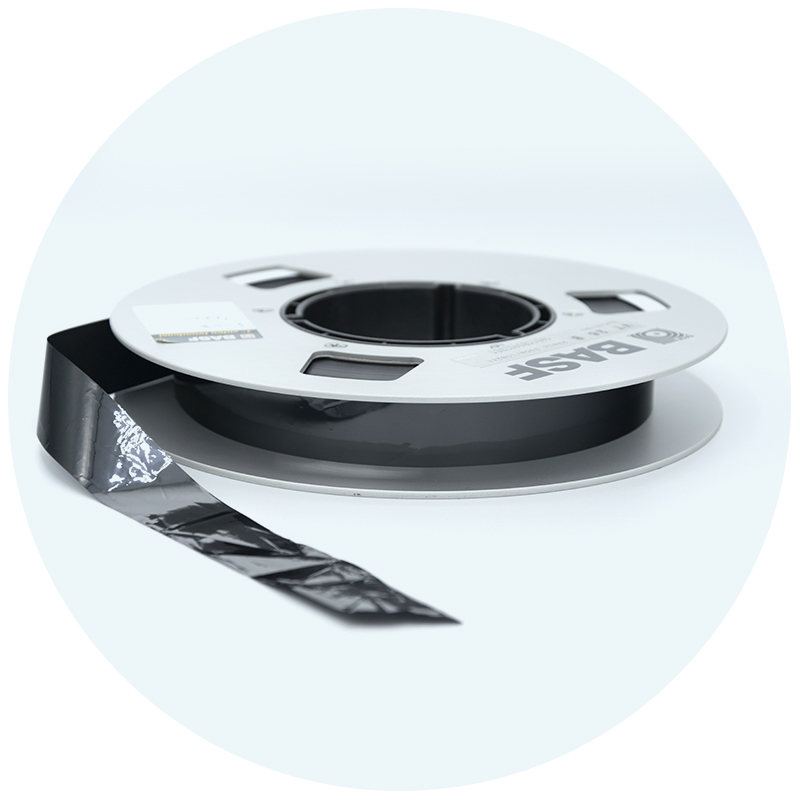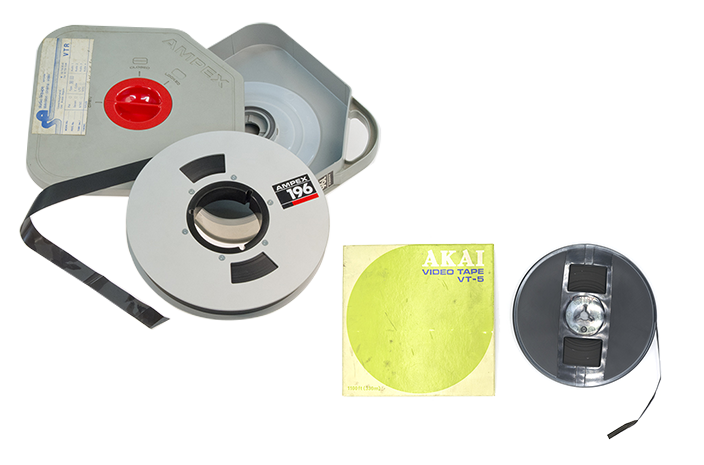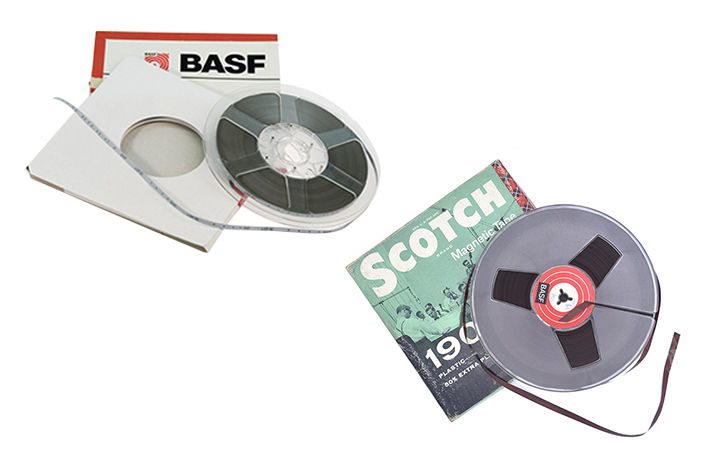Open reel video tape
The open reel video tape had its heyday between 1956 and the beginning of the eighties. The brown or black tape is wound around a reel or coil without a casing. Most often, the corresponding box consists of plastic or cardboard.
Formats
Open reel video tapes, also known as reel-to-reel-videos, came in different tape formats:
- ¼” (6,35 mm): EIAJ or other kinds
- ½” (12,7 mm): EIAJ, CV or other kinds
- 1” (25,4 mm): A, B, C, IVC or other kinds
- 2” (50,8 mm): IVC or quadruplex
The 1 inch and 2 inch formats were used for professional purposes.
Did you know …
… that larger formats had a handle in one of the corners of the plastic box to make them easier to transport? They were very heavy.
Do you want to immerse yourself in open reel video tapes? Read on here:
- Wikipedia – Videotape
- Videotape Identification and Assessment Guide (PDF)
- Museum of Obsolete Media – Ampex 2 inch helical scan
- Museum of Obsolete Media – Sony ev 1 inch open reel video tape
- Museum of Obsolete Media – Akai video tape
- Museum of Obsolete Media – 2 inch eiaj open reel video tape
- Museum of Obsolete Media – 1 inch type B
- Museum of Obsolete Media – 1 inch type C
Open reel audio tape
It won’t surprise you that open reel audio tapes were designed for audio recordings. They were especially popular between 1930 and 1990 with amateurs as well as professionals. You recognise them by their brown or black tape without cassette casing.
This carrier is also known as the audio tape, multitrack recording, 16-track tape or 24-track tape.
Four kinds
We can divide open reel audio tapes into four groups, depending on their tape width:
- ¼” (6,35mm)
- ½” (12,7 mm)
- 1” (25,4 mm)
- 2” (50,8 mm)
The 1 inch and 2 inch formats were used for professional purposes.
More information on the open reel audio tape can be found on:
Acetate
From its invention up to the sixties, these tapes were made from cellulose acetate. They are sensitive to the so called ‘vinegar syndrome’, which causes the tape to deform and a vinegar smell emerges. Since World War II, PVC or sometimes paper tapes were used next to acetate, but those were rather rare. From the sixties onwards, the tapes were made out of polyester.
Did you know …
… that open reel magnetic tapes were used as storage medium in the very first computers? They are actually at the root of our technological revolution.






